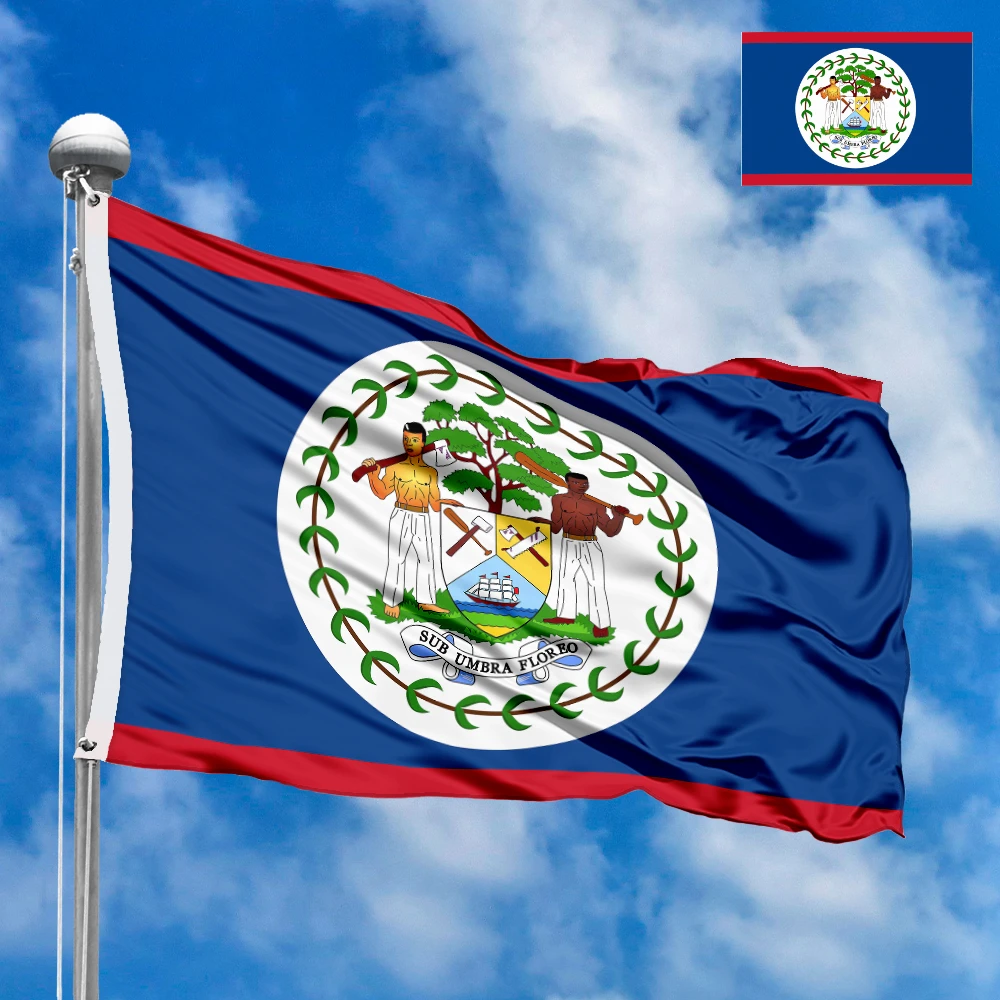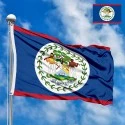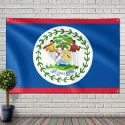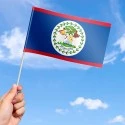The national flag of Belize is a vibrant and complex symbol that tells the story of a nation born from its struggle for independence. Its design is deeply intertwined with its colonial past, rich natural resources, and the aspiration for unity. The flag is a source of immense national pride, serving as a constant reminder of Belize’s journey from British Honduras to a sovereign state.
A Detailed Look at the Flag's Design and Symbolism
The flag of Belize is unique for its intricate design and the sheer number of colours it incorporates (19 in total, making it one of the most colourful flags in the world). The main body of the flag is a royal blue field, bordered at the top and bottom by two narrow red stripes. At the centre of the blue field is a large white circle containing the Coat of Arms of Belize, which is surrounded by a wreath of 50 green leaves.
Each element of the flag carries a significant message, reflecting the core principles of the Belizean nation:
-
Blue: The royal blue field represents the People's United Party (PUP), the political party that led Belize to independence. It also symbolizes the Caribbean Sea and the country's connection to the sky and opportunities.
-
Red: The two red stripes, added to the original design, represent the opposition party, the United Democratic Party (UDP). Their inclusion was a gesture of national unity, ensuring the flag represented all Belizeans, regardless of political affiliation. Red also symbolizes the nation's determination and resilience.
-
The Coat of Arms: The detailed Coat of Arms is the central and most significant part of the flag. It depicts the logging industry, which was the foundation of the country's economy for centuries. It features:
-
Mahogany Tree: A central mahogany tree rises from a green base, symbolising the nation's most important natural resource and its historical economic foundation.
-
Two Woodcutters: The shield is supported by two woodcutters, one a man of African descent holding a beating axe, and the other a Mestizo man holding a paddle. These figures represent the ethnic diversity of the Belizean people and the historical importance of the logging industry. Belize is one of only two sovereign nations whose flag features humans as a major design element.
-
The Shield: The shield is divided into three sections. The bottom section shows a sailing ship, representing the maritime industry and trade. The two upper sections display the tools of the woodcutters: a paddle and a squaring axe, and a saw and a beating axe, highlighting the importance of the timber industry.
-
The National Motto: Below the shield, a scroll bears the national motto in Latin: "Sub Umbra Floreo" (Under the Shade I Flourish). This motto refers to the country's growth and prosperity under the protection (or shade) of the mahogany tree.
-
The Wreath of Leaves: The coat of arms is encircled by a wreath of 50 green leaves. These leaves represent the year 1950, which marked the beginning of the nationalist movement in Belize.
The History and Adoption of the Flag
The history of the Belizean flag is a tale of political evolution and compromise. The flag's design is based on the unofficial flag of the People's United Party (PUP), which was a simple blue field with the coat of arms on a white disc. As Belize, then known as British Honduras, prepared for independence, a national competition was held to design a new flag. The PUP's design was chosen, but with a crucial addition: the two red stripes. This change was a deliberate effort to foster national unity by including the colour of the main opposition party, the UDP.
The current flag was officially adopted on September 21, 1981, the day Belize gained full independence from the United Kingdom. Its design, though complex, is a testament to the nation's ability to unite diverse political and ethnic groups under a single banner.
Meaning and Significance for Citizens
For the people of Belize, the flag is a powerful symbol of their unique identity and history. It represents the country's rich natural resources, its diverse population, and the importance of unity in achieving national goals. The flag is proudly displayed on Independence Day and other national holidays, serving as a reminder of the nation's journey to self-determination. The motto, "Sub Umbra Floreo," encapsulates the spirit of the Belizean people — resilient, flourishing, and strong.
Interesting Facts
-
Belize's flag is the only national flag in the world to feature two human beings as a major design element, a powerful symbol of the nation's ethnic diversity.
-
The flag incorporates 19 different colours and shades, making it one of the most visually complex national flags in existence.
-
The 50 green leaves surrounding the coat of arms commemorate the year 1950, the year the PUP party came to power and the nationalist movement gained momentum.
-
The design of the coat of arms dates back to 1819, but it was slightly modified over the years, most recently to ensure the two figures represented the country's diverse racial makeup.
-
The flag without the coat of arms is sometimes used as the civil flag, though the full flag is more common.
In the demonstration images, full-size flags are shown with proportions of 2:3, and hand-held flags with proportions of 1:2.






 Waving flag
Waving flag
 Sizes:
Sizes:
 Round flag
Round flag
 Sizes:
Sizes:
 Rectangular flag 2:3
Rectangular flag 2:3
 Sizes:
Sizes: